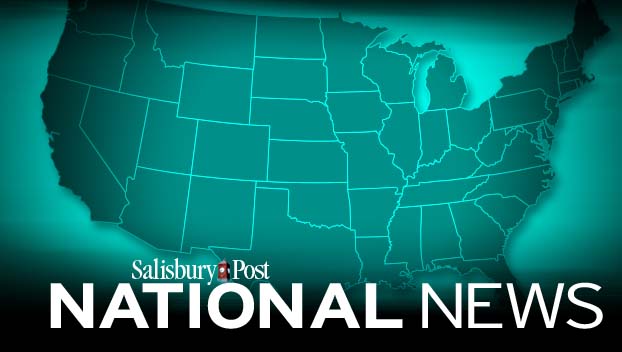Blackouts in US Northwest due to heat wave, deaths reported
Published 11:55 pm Tuesday, June 29, 2021
By Nicholas K. Geranios and Andrew Selsky
Associated Press
SPOKANE, Wash. — The unprecedented Northwest U.S. heat wave that slammed Seattle and Portland, Oregon, moved inland Tuesday — prompting a electrical utility in Spokane, Washington, to resume rolling blackouts amid heavy power demand.
Officials said more than a half-dozen deaths in Washington and Oregon may be tied to the intense heat that began late last week.
The dangerous weather that gave Seattle and Portland consecutive days of record high temperatures exceeding 100 degrees was expected to ease in those cities. But inland Spokane saw temperatures spike.
The National Weather Service said the mercury reached 109 degrees in Spokane— the highest temperature ever recorded there.
About 9,300 Avista Utilities customers in Spokane lost power on Monday and the company said more planned blackouts began on Tuesday afternoon in the city of about 220,000 people.
“We try to limit outages to one hour per customer,” said Heather Rosentrater, an Avista vice president for energy delivery.
She said about 2,400 customers were without power as of shortly after 2 p.m. Tuesday, mostly on the north side of the city, and those customers had been alerted about the planned outage. About 21,000 customers were warned Tuesday morning that they might experience an outage, she said.
Avista had to implement deliberate blackouts on Monday because “the electric system experienced a new peak demand, and the strain of the high temperatures impacted the system in a way that required us to proactively turn off power for some customers,” said company president and chief executive Dennis Vermillion. “This happened faster than anticipated.”
Rosentrater said the outages were a distribution problem, and did not stem from a lack of electricity in the system
Meanwhile, authorities said multiple recent deaths in the region were possibly related to the scorching weather.
The King County Medical Examiner’s office said two people died due to hyperthermia, meaning their bodies had became dangerously overheated. The Seattle Times reported they were a 65-year-old Seattle woman and a 68-year-old Enumclaw, Washington, woman.
The heat may have claimed the life of a worker on a nursery in Oregon, the state’s worker safety agency, known as Oregon OSHA, said on Tuesday.
The man who died was from Guatemala and had apparently arrived in the United States only a few months ago, said Andres Pablo Lucas, owner of Brother Farm Labor Contractor that provided workers for the nursery, including the man who died.
The man, whose name was not disclosed, died at Ernst Nursery and Farms, a wholesale supplier in St. Paul, 20 miles north of Salem, on Saturday amid sweltering temperatures. An Oregon OSHA database listed the death as heat-related.
“The employee was working on a crew moving irrigation lines. At the end of the shift he was found unresponsive in the field,” said agency spokesman Aaron Corvin.
Speaking in Spanish, Pablo Lucas said when workers gathered together shortly after noon on Saturday, they noticed one of them was missing. They began searching and found his body. Pablo Lucas said he didn’t remember the man’s name.
Pablo Lucas said the laborers often have the option to start working near sunrise when it is cooler and can stop around midday, but some want to stay regardless of the heat.
“The people want to work, to fight to succeed,” he said. “For that reason, they stay.”
Officials in Bremerton, Washington, said heat may have contributed to four deaths in that Puget Sound city. But Vince Hlavaty, Bremerton’s medical officer, told the Kitsap Sun that firefighters cannot say definitively whether the heat was the cause of death.
In Bend, Oregon, authorities said the deaths of two homeless people in extreme heat may have been weather-related.
The United Farm Workers urged Washington Gov. Jay Inslee to immediately issue emergency heat standards protecting all farm and other outdoor workers in the state with a strong agricultural sector. The state’s current heat standards fall short of safeguards the UFW first won in California in 2005 that have prevented deaths and illnesses from heat stroke, the union said in a statement.
Unlike workers in California, Washington state farm workers do not have the right to work shade and breaks amid extreme temperatures.
“I was off today so I was helping distribute water and information to the cherry harvesters,” said Martha Acevedo, a wine grape worker from Sunnyside, Washington, said in a union statement. “They were struggling. No shade, not even cold water.”
Seattle was cooler Tueday with temperatures expected to reach about 90 degrees after registering 108 degrees on Monday — well above Sunday’s all-time high of 104 degrees. Portland, Oregon, reached 116 degrees after hitting records of 108 degrees on Saturday and 112 degrees on Sunday.
President Joe Biden, during an infrastructure speech in Wisconsin, took note of the Northwest as he spoke about the need to be prepared for extreme weather.
“Anybody ever believe you’d turn on the news and see it’s 116 degrees in Portland Oregon? 116 degrees,” the president said, working in a dig at those who cast doubt on the reality of climate change. “But don’t worry — there is no global warming because it’s just a figment of our imaginations.”
The heat wave was caused by what meteorologists described as a dome of high pressure over the Northwest and worsened by human-caused climate change, which is making such extreme weather events more likely and more extreme.



